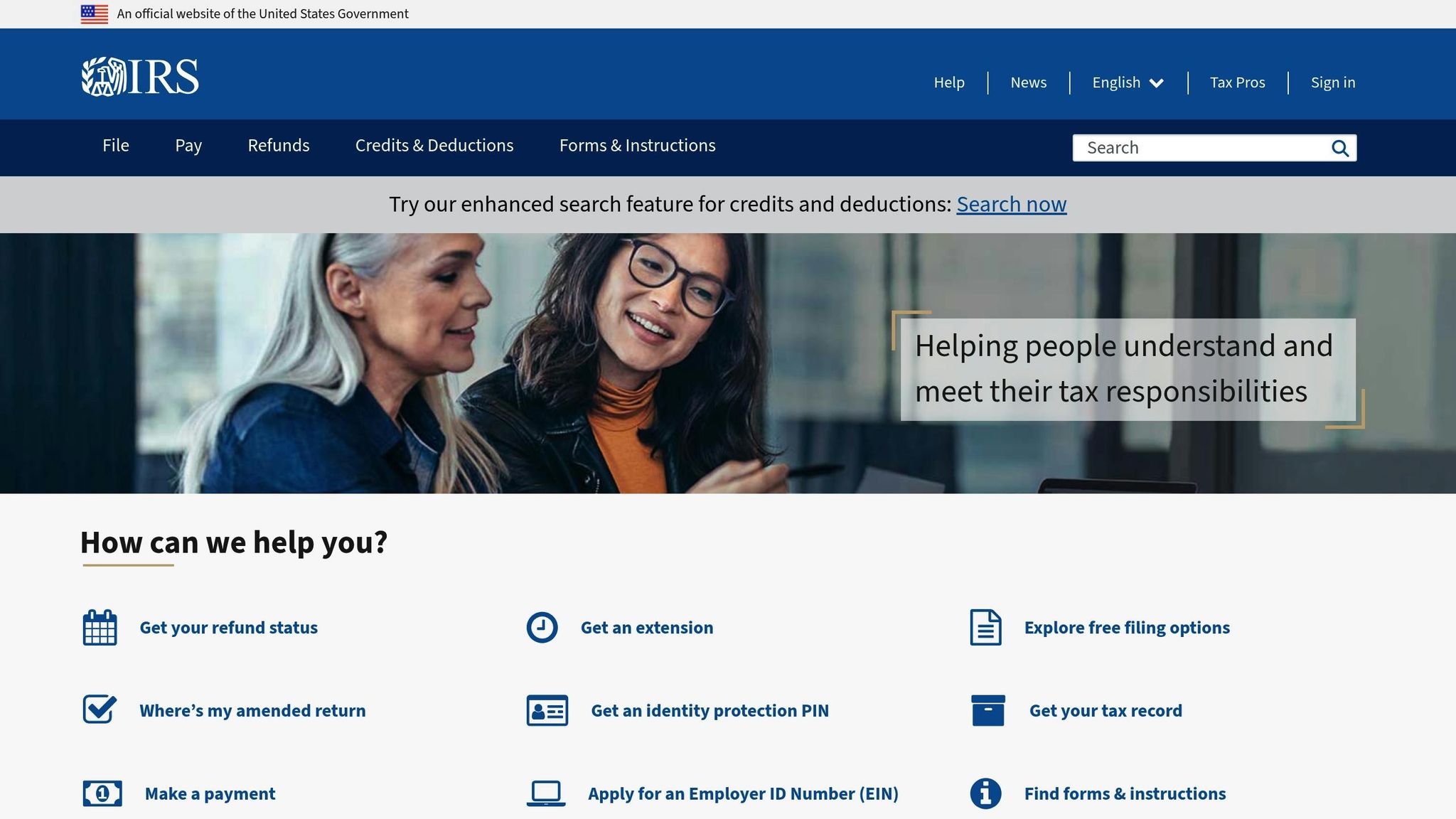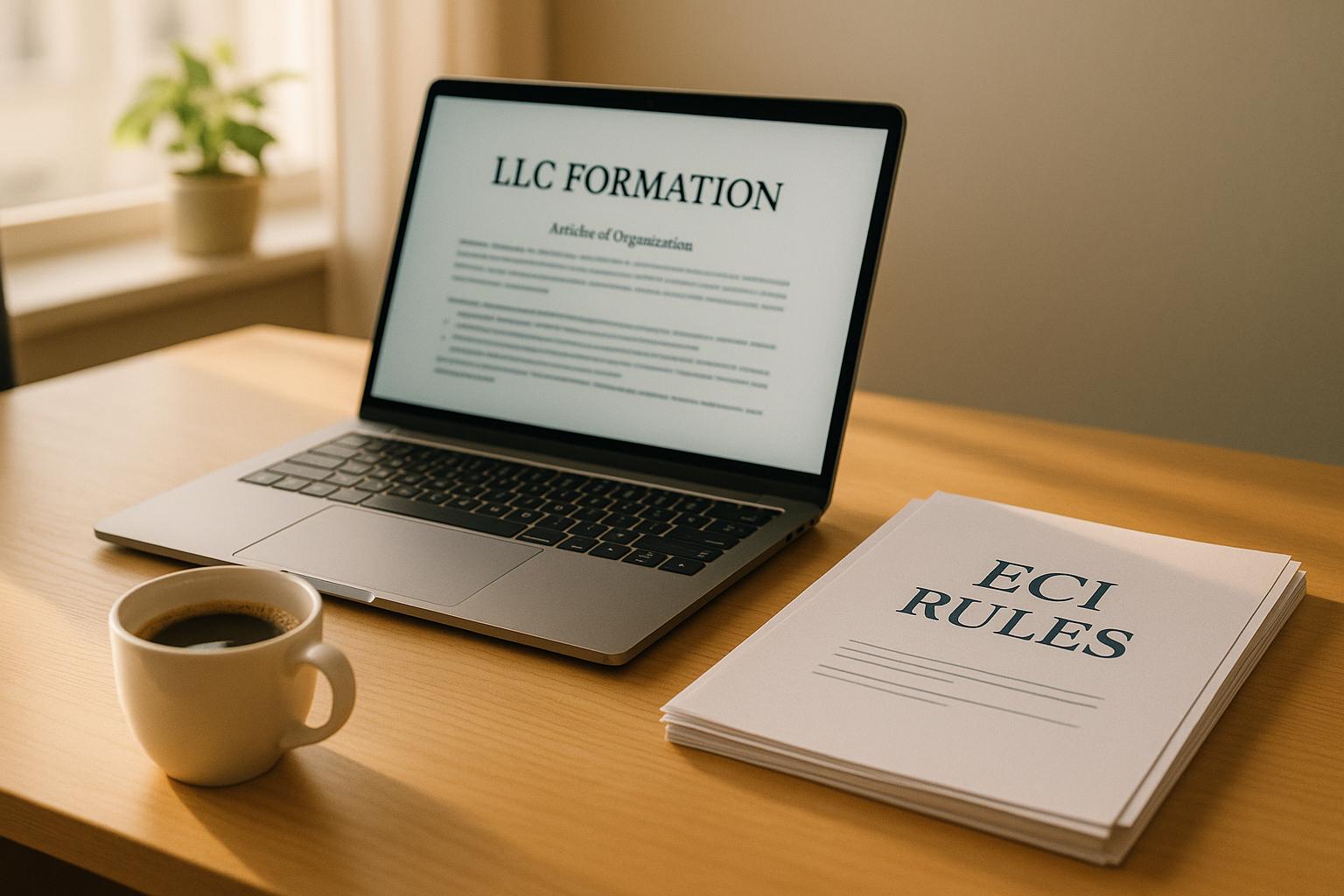The 83(b) election is a tax strategy that can save startup founders and employees thousands - or even millions - of dollars. It allows you to pay taxes on equity grants when they’re issued, based on their current (and often lower) value, instead of waiting until they vest, when the value could be much higher. Here’s the key takeaway:
- Who Benefits: Startup founders, early employees, and key advisors receiving restricted stock awards (RSAs) or early-exercised stock options.
- Why It Matters: Filing early locks in a lower tax bill, especially for high-growth companies.
- Deadline: You must file with the IRS within 30 days of receiving your stock grant - no exceptions.
Quick Comparison: With vs. Without 83(b) Election
| Factor | With 83(b) | Without 83(b) |
|---|---|---|
| Taxable Value | At grant (e.g., $1/share) | At vesting (e.g., $5/share) |
| Ordinary Income Tax | Lower upfront payment | Higher payment later |
| Capital Gains Tax | Applies to future growth | Applies to higher initial value |
| Risk | Pay taxes upfront | Higher tax burden if stock grows |
Filing an 83(b) election early can drastically reduce your tax liability. But it’s not without risks - like losing prepaid taxes if the company fails. Always consult a tax advisor to decide if it’s the right move for you.
Tax Savings Breakdown
Early Filing Benefits
Filing early allows you to secure your tax obligation based on the current, lower fair market value (FMV) of the shares.
Here’s a practical example using current tax rates. Imagine a startup employee receiving 100,000 shares of restricted stock, valued at $1 per share. With a 35% ordinary income tax rate, here’s how the numbers play out:
| Timing | Share Value | Total Value | Tax Rate | Tax Due |
|---|---|---|---|---|
| At Grant | $1/share | $100,000 | 35% | $35,000 |
| At Vesting (4 years) | $5/share | $500,000 | 35% | $175,000 |
| Potential Tax Savings | $140,000 |
This breakdown shows how filing an 83(b) election early can significantly reduce your tax burden.
Best Use Cases
The 83(b) election is most advantageous in the following scenarios:
- Early-Stage Startups: When share values are still low, filing an 83(b) election locks in the lowest possible tax basis. This is especially useful for founders and early employees receiving Restricted Stock Awards (RSAs).
- High-Growth Companies: For companies expecting rapid valuation increases, the tax savings can grow exponentially. The bigger the gap between the grant price and the vesting price, the larger the benefit.
Tax Impact Comparison
Here’s a side-by-side look at the long-term tax advantages of filing an 83(b) election:
| Factor | With 83(b) Election | Without 83(b) Election |
|---|---|---|
| Initial Tax Event | At grant date | At each vesting date |
| Taxable Amount | FMV at grant ($100,000) | FMV at vesting ($500,000) |
| Ordinary Income Tax (35%) | $35,000 | $175,000 |
| Future Capital Gains | On appreciation above grant price | On appreciation above vesting price |
| Cash Flow Impact | Immediate smaller payment | Larger payments spread over vesting |
| Total Tax Burden | Lower if share price increases | Higher with share price growth |
Filing Requirements
Qualification Rules
Not all equity types are eligible for an 83(b) election, so it's important to confirm eligibility before moving forward.
Eligible equity includes:
- Restricted Stock Awards (RSAs)
- Early-exercised stock options
- Profits interest in LLC/partnership setups
Excluded equity:
- Restricted Stock Units (RSUs)
- Stock options that haven't been early-exercised
Once you've confirmed eligibility, it's time to weigh the risks involved.
Potential Downsides
Filing an 83(b) election comes with some risks. Here's a breakdown of key concerns and how to address them:
| Risk Factor | Effect | Mitigation Strategy |
|---|---|---|
| Company Failure | Loss of prepaid taxes | Evaluate the company's stability and growth potential. |
| Stock Value Decline | Overpayment on taxes if value drops | Review current valuations and market trends. |
| Leaving Before Vesting | Forfeiture of shares and taxes paid | Understand the vesting schedule and your commitment. |
| Cash Flow Impact | Immediate tax payment required | Ensure you have enough funds to cover the upfront tax. |
Getting Expert Help
Because of these risks, consulting with a professional is highly recommended.
"File the 83(b) election within 30 days of grant – this deadline is non-negotiable."
Here’s how professional advisors can help:
-
Tax Professional:
- Calculate the tax impact
- Confirm your eligibility
- Ensure all documentation is accurate and complete
-
Legal Counsel:
- Review the terms of your stock agreement
- Confirm compliance with legal requirements
If you miss the 30-day filing deadline, your options are limited. Possible solutions include:
- Canceling and reissuing the stock grant
- Adjusting the vesting schedule
- Modifying repurchase terms
Filing Instructions
Calculate Stock Value
To calculate the fair market value (FMV) of your shares, use the following:
- The most recent company valuation (e.g., a 409A valuation)
- The share price listed in your grant agreement
- The amount you paid to purchase the shares
For early-stage startups, the FMV often matches the common stock exercise price. If your company recently completed a funding round, check with your finance team to ensure you're using the latest valuation.
Complete IRS Forms

You'll need to prepare these documents:
| Document | Quantity | Purpose |
|---|---|---|
| Original 83(b) Form | 3 copies | One for the IRS, one for confirmation, and one for your personal records |
| Return Envelope | 1 | A self-addressed, stamped envelope for IRS confirmation |
| Certified Mail Receipt | 1 | Proof that your submission was sent on time |
Your 83(b) election package should include:
- Personal Information: Full legal name, Social Security number, home address, and tax year.
- Stock Details: Number of shares, FMV at the time of grant, amount paid, and grant date.
- Supporting Documentation: A copy of your stock purchase agreement, proof of payment, and company information.
Make sure all documents are organized and ready for submission.
Document and Report
Once your filing package is complete:
-
Submit to the IRS
Send two copies via certified mail with a return receipt. Keep records of the mailing date, tracking number, and the IRS service center address. -
Keep Personal Records
Retain a full copy of your submission, including the stamped receipt and all stock grant documents.
The 30-day filing deadline is strict - no exceptions are made by the IRS. Start this process as soon as you receive your stock grant to avoid missing the deadline.
sbb-itb-fcd17fe
Error Prevention
Filing Mistakes
The 83(b) election process has critical steps where mistakes can void your benefits. Here's how to avoid common errors:
| Common Error | Impact | Prevention Strategy |
|---|---|---|
| Missing the 30-day deadline | Election is invalid; no exceptions | File as soon as you receive your stock grant |
| Using the wrong IRS address | Delays or rejection of your filing | Double-check the current IRS service center address |
| Incomplete documentation | Filing rejection | Ensure all required forms and documents are included |
"You filed your Section 83(b) election, right?" Silence. "Right?" - Mike Baker
Success Tips
Avoiding the pitfalls above requires careful planning. Use these strategies to ensure your filing is accurate and on time:
Timing Considerations
- If the 30th day lands on a weekend or federal holiday, you can file on the next business day.
- Set multiple calendar reminders starting from the day you receive your stock grant.
Documentation Requirements
- Keep proof of submission, such as certified mail receipts or tracking numbers.
- Save digital copies of your entire filing package for easy reference.
Professional Support and Emergency Response
- Employers should provide clear instructions and all necessary forms when issuing stock.
- If issues arise, contact a tax advisor immediately for guidance.
- Document every interaction with the IRS, including dates and details.
- Keep a record of when you discovered the issue and any actions you took.
- Retain evidence of your original filing attempt, such as mailing receipts or confirmation emails.
These steps will help you navigate the process smoothly and reduce the risk of filing errors. Always refer back to the detailed filing instructions for additional guidance.
Conclusion
Summary Points
The 83(b) election offers a way for startup founders and employees with equity compensation to potentially save on taxes. However, the process requires careful attention to timing and documentation.
Here’s how filing versus not filing an 83(b) election compares:
- Tax payment timing: Taxes are paid at the time of the grant versus at the time of vesting.
- Tax basis: Filing locks in a lower initial fair market value (FMV), while not filing means taxes are based on a higher FMV at vesting.
- Capital gains treatment: Filing allows earlier qualification for favorable capital gains rates, while delaying the election postpones this benefit.
- Risk factors: Filing is an irreversible decision and carries the risk of share value decline.
These points highlight the importance of understanding the election process and its implications.
Next Steps
If you're considering an 83(b) election, here’s how to proceed:
Seek Professional Advice
Book a session with an equity tax advisor. Even a one-hour consultation can help you avoid costly errors.
Organize Your Documents
Gather all relevant equity grant paperwork, including:
- Grant date and terms
- Current FMV assessment
- Vesting schedule
- The company’s equity plan documents
"As with any major financial decision, it's crucial to consult a tax advisor or other tax professional when considering an 83(b) election." - Harness
83(b) Elections and Founder Equity Vesting FAQs
What steps do I need to take to properly file an 83(b) election with the IRS?
To file an 83(b) election successfully, you must act quickly - within 30 days of receiving your stock grant. Here's what to do:
- Prepare your documents: Complete two copies of the 83(b) election form, including your Social Security Number (SSN) or Individual Taxpayer Identification Number (ITIN). Include a cover letter requesting the IRS to date-stamp and return a copy, and prepare a self-addressed, stamped envelope.
- Mail your filing: Send the original signed form, a photocopy, the cover letter, and the stamped envelope to the IRS Service Center where you file your annual tax return. Use USPS Certified Mail with Return Receipt to ensure proof of mailing.
- Notify your employer: Provide a copy of the completed 83(b) election form to your employer for their records.
Finally, keep copies of everything, including your certified mail receipt and any tracking information, for your records. Filing this election on time can potentially save you significant taxes in the future.
What are the risks of filing an 83(b) election, and how can I reduce them?
Filing an 83(b) election comes with a few key risks. First, the taxes you pay upfront are non-refundable, even if you leave the company before your shares vest or the company underperforms. Second, paying taxes early can be a financial strain if you don’t have enough cash on hand. Lastly, if the stock value drops after filing, you might end up paying more in taxes than necessary.
To minimize these risks, carefully evaluate your company's growth potential and your personal financial situation. It’s also a good idea to consult with a tax professional to ensure the decision aligns with your long-term financial goals.
How do I know if my equity grants qualify for an 83(b) election, and what happens if they don't?
To determine if your equity grants qualify for an 83(b) election, check if the shares are subject to vesting requirements. The 83(b) election applies only to unvested shares. If your shares are already fully vested when granted, there’s no need to file an 83(b) election.
If your equity grants don’t qualify because they are fully vested, no further action is required. However, if they are unvested and you want to make the election, be sure to file within 30 days of receiving the grant to take advantage of potential tax benefits. Always consult a tax professional to ensure compliance and maximize your savings.

.svg)




